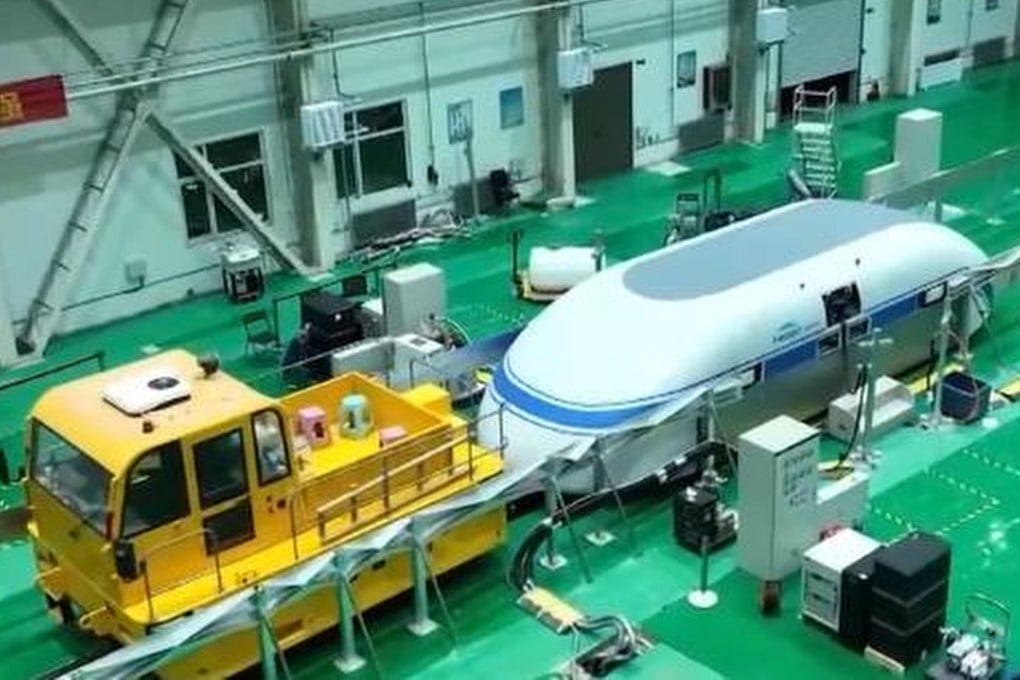China on track for ultra-high speed trains with hyperloop test ‘setting record’
- According to CASIC, its high-speed flier surpassed previous records using full-scale test line to travel 2km with stable levitation
- The result is a ‘significant breakthrough’ for the project, which is aiming for speeds of up to 1,000km per hour

While the exact speed reached remains classified, the Third Academy of China Aerospace Science and Industry Corporation (CASIC) said it had made “a significant breakthrough” with its latest test.
According to CASIC, it was the first time the maglev achieved stable levitation while travelling in a low-vacuum tube, using the full-scale 2km (1.2-mile) test line that was completed in November.
CASIC said the results surpassed the previous known record set by a superconducting maglev vehicle – 623km/hr (387mph) under non-vacuum conditions, as reported in October 2023.
A month earlier, a similar test of high-temperature superconducting maglev technology achieved 234km/hr (145mph) on a 380 metre (1,250ft) track.
The high-speed flier project integrates aerospace and terrestrial rail transport technologies, with a designed speed of up to 1,000km/hr – surpassing commercial aviation speeds.